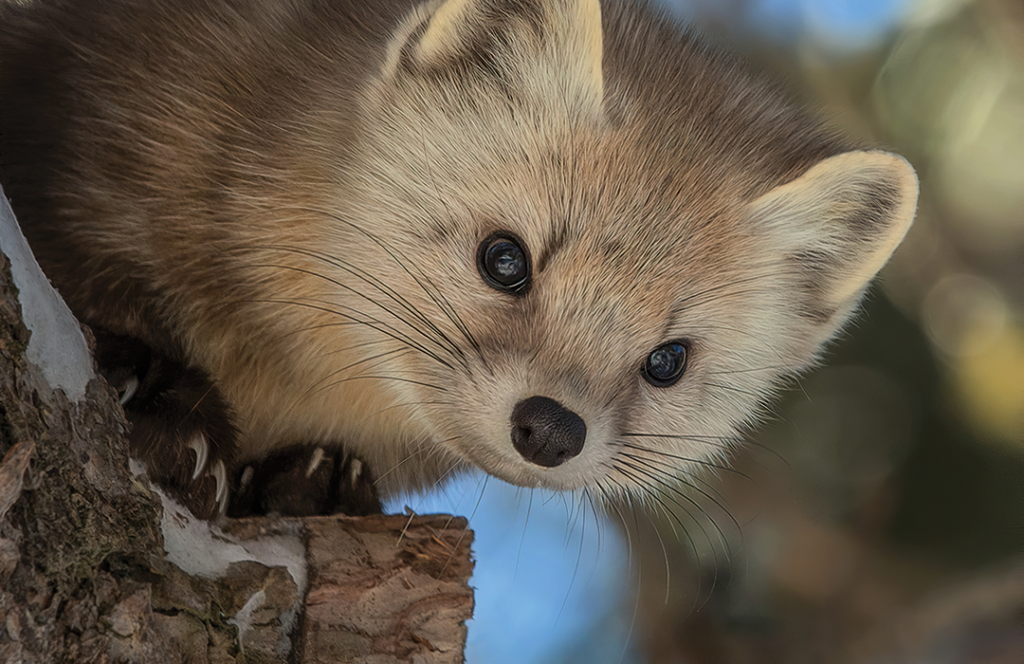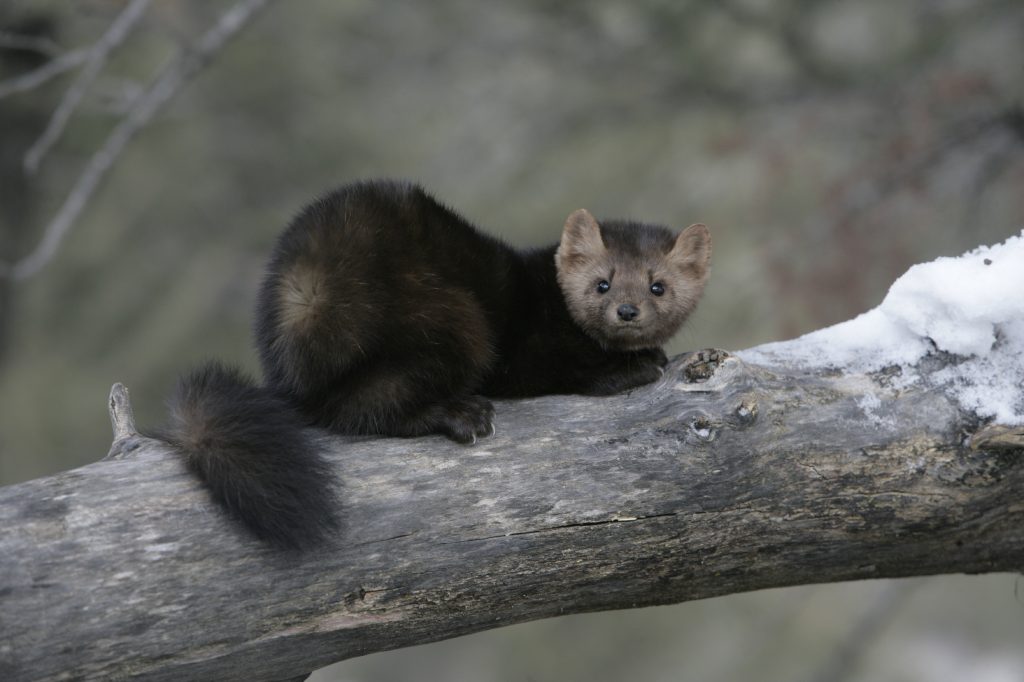The Pine Marten: Nature’s Most Adorable Predator!
The Pine Marten may be one of the rarest and most elusive mammals living in the boreal forest. Standing at a height of merely two feet with adults weighing just one to three pounds, you don’t see these nocturnal creatures often! However, you may be able to hear when one of these evasive mammals is near before you see them—Martens are often followed by birds who watch them from a safe distance, singing alarm calls to other birds as they pass.
Don’t be fooled by a Pine Marten’s charming looks. They can take down a deer.
Throughout Canada, Pine Martens are typically found within coniferous and mixed-wood forests. However, across the globe, their habitats can vary vastly. Some martens prefer old hardwood forests, while others can be found high up on the mountainside where there are hardly any trees. They may also live in grasslands or marshes.

One commonality between these furry creatures is that they are exceptional climbers, equipped with long retractable claws on their front feet to scurry up practically anything with ease.
Pine martens tend to spend most of their time in the trees, but they do most hunting on the ground.
These mammals may look adorable and are barely the size of a housecat, but pine martens are typically considered top predators in the wild. Known to be opportunistic feeders, eating anything they are able to catch. Their diets consist primarily of small animals, including birds, squirrels and rodents. Nuts and fruits are also part of their diet during the summer and autumn. These last two items are noteworthy because martens are considered fantastic seed dispersers within their territories.
Many martens are very territorial and cover an extensive home range. Male martens, especially, have wide-ranging territories spanning upwards to 7.8km2—meaning they travel a lot, providing more opportunity to spread seed. Although martens are top predators, they do have to be on the lookout for threats in the form of bears, bobcats, coyotes, wolves, and other dangers. However, the pine marten’s biggest threat is people.
Trappers traditionally prized pine martens for their valuable pelts, sometimes referred to as Canadian sable.
Throughout the latter part of the 1800s, a combination of habitat loss from deforestation, the fur industry and predator control caused an unprecedented decrease in pine marten populations. By the late 90s, the species was close to extinction, thriving in only certain areas across the northern hemisphere. The pine marten population within Newfoundland was estimated to be below 300 mature individuals.

Fortunately, pine martens are now protected and considered a threatened species under the Species at Risk Act (SARA). As a result of this protection, the species’ population has expanded its range and size—now occupying new growth forests.
It will take a while until pine marten populations return to healthy numbers as they are slow breeders. This species breeds only once a year through a process called delayed implantation. Since fertilized eggs don’t implant until early spring, female martens remain pregnant for almost two-thirds of the year. Embryos then develop within a month, birthing one to five kits.
Conclusion
Forest management practices, re-introduction of martens in certain areas and fur harvest management have improved the population health of the Pine Marten across Canada, but the work is not over.
Visit our campaigns to add your voice to initiatives that protect species like the pine marten through the creation of protected areas and nature-positive practices.



